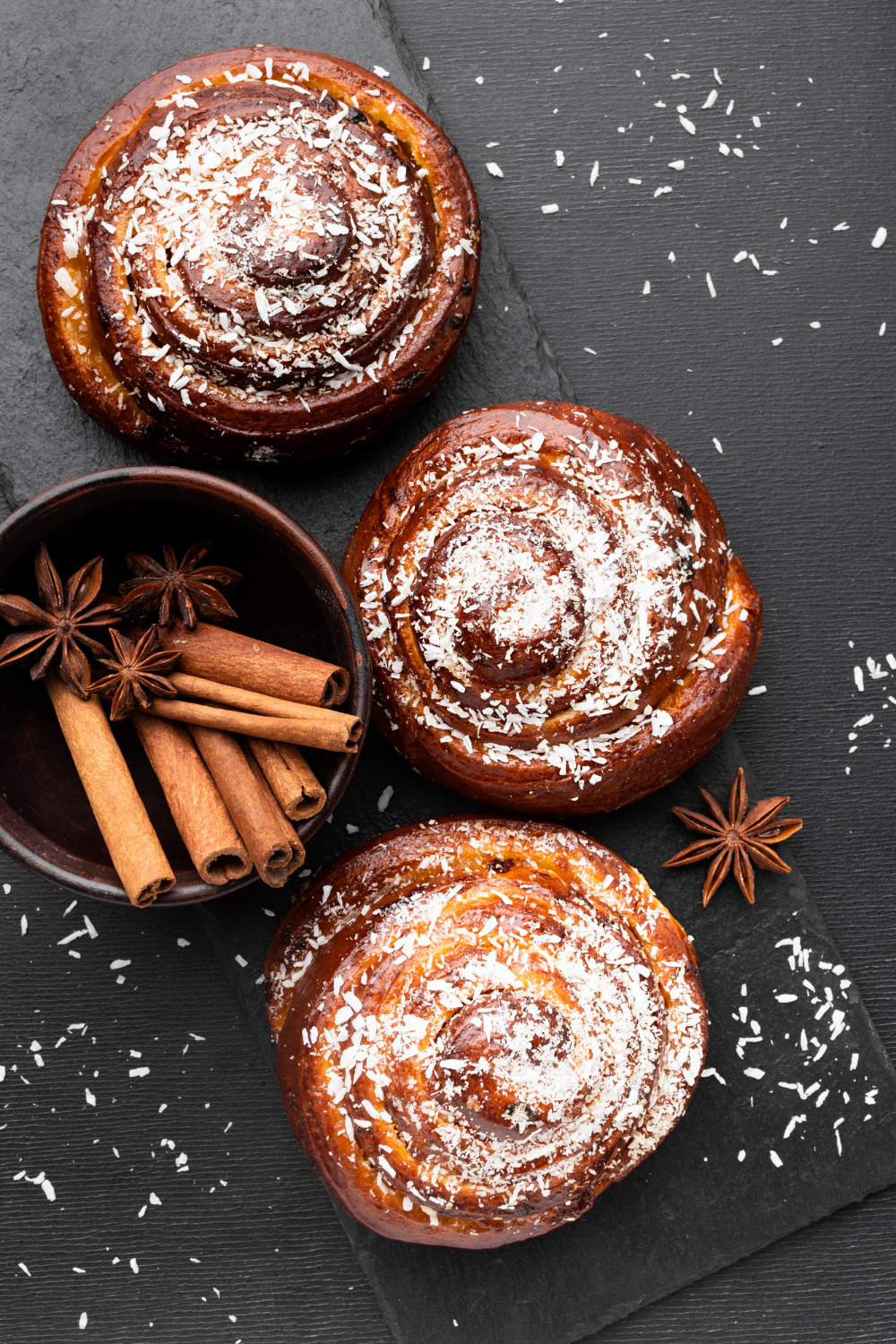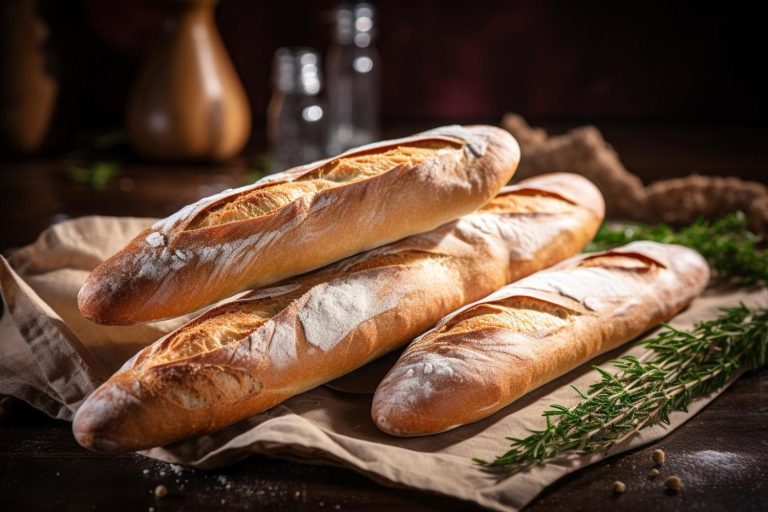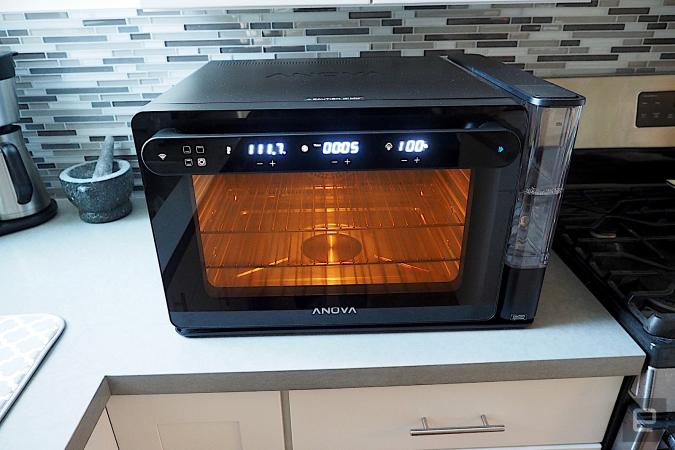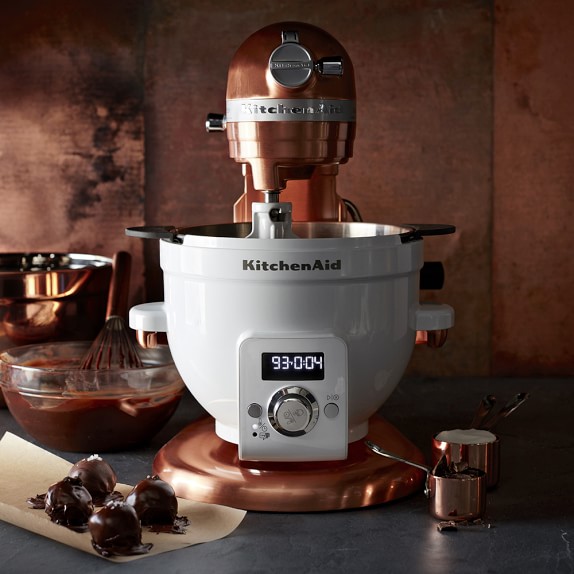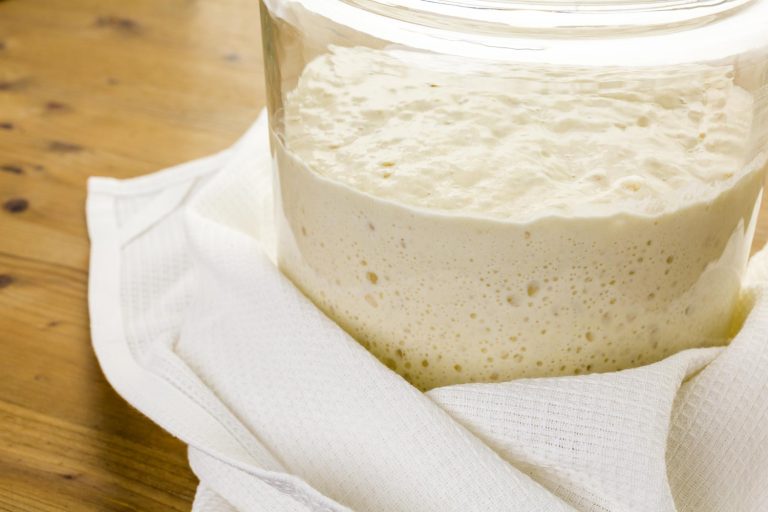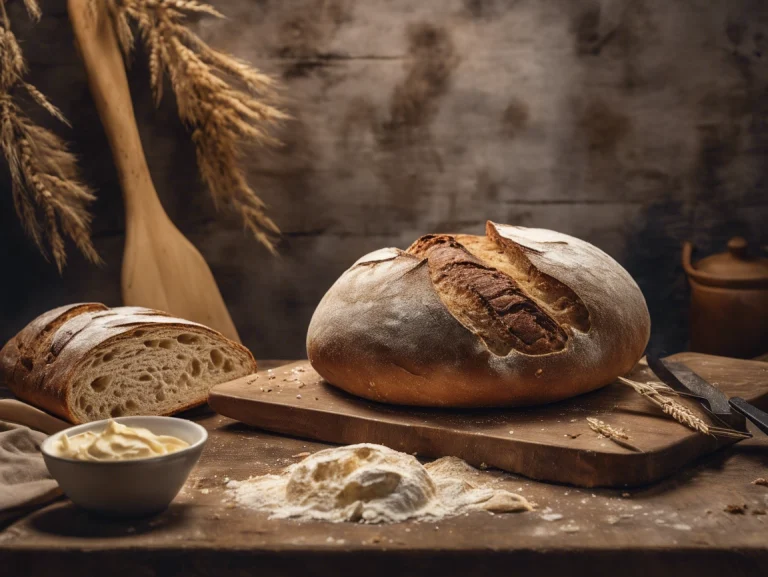The Ultimate Guide to Sweet Sourdough Recipes for Every Occasion
Sweet sourdough recipes are the next big thing in artisanal baking. These recipes blend traditional fermentation techniques with amazing flavors. Natural wild yeast and lactic acid bacteria make breads that are easier to digest and taste more complex. Sweet sourdough is a great choice if you want a healthier option than regular sweet breads.
This guide shows you everything about making perfect sweet sourdough variations. You’ll learn to make classic cinnamon-raisin loaves and creative chocolate-studded breads. The guide covers essential techniques, proper fermentation methods, and explains the science of balancing sweetness with sourdough tang. You’ll become skilled at adding sweet ingredients to your sourdough starter-based recipes. Each part gives you step-by-step instructions and expert tips to help you get great results every time.
The Basics of Sweet Sourdough
The fundamentals of enriched sourdough create endless possibilities to make delectable sweet bread variations. Sweet sourdough stands out as a distinctive bread category that blends traditional fermentation with enriching ingredients. This combination produces tender and flavorful baked goods that delight the senses.
What is sweet sourdough?
Sweet sourdough is an enriched dough that blends fats and sweeteners with traditional sourdough base. This special variation has butter, eggs, milk, and natural sweeteners that create a softer, more tender crumb structure. These enriching elements make the gluten strands shorter, which gives the bread a delicate texture while preserving traditional sourdough’s beneficial fermentation properties.
Benefits of sweet sourdough
The long fermentation process of sweet sourdough brings many more advantages:
- The partial protein breakdown makes it easier to digest
- Your body absorbs nutrients better
- Blood sugar levels stay stable because of slower digestion
- The bread stays fresh longer
- Higher protein content helps cell regeneration
The fermentation process reshapes the scene by changing the flour’s components. Vitamins and minerals become more available, and new beneficial compounds support gut health. Helpful bacteria break down complex proteins, which makes sweet sourdough easier to digest than regular enriched breads.
Key ingredients
Sweet sourdough success depends on these core components:
| Ingredient | Purpose | Recommended Amount |
|---|---|---|
| Active sourdough starter | Fermentation and leavening | 20-25% of total flour weight |
| High-protein flour | Structure and texture | 500-600g per standard loaf |
| Butter or oils | Tenderness and richness | 15-20% of flour weight |
| Natural sweeteners | Flavor and texture | 12-15% of flour weight |
| Whole milk | Softness and flavor | 50-60% hydration ratio |
| Eggs | Structure and enrichment | 2-3 per standard recipe |
The final product’s quality depends on how well these ingredients work together. A healthy, active starter will give proper fermentation and rise. The flour’s protein content (typically 12-13%) creates the best structure. You need to balance fats and liquids carefully to get the right texture without making the dough unstable.
Temperature control is a vital part of sweet sourdough development. Cooler temperatures create less sour flavors that work well with sweet additions. This perfect mix of ingredients and process gives you a flexible base to make many sweet sourdough variations. You can create anything from cinnamon rolls to fruit-filled breads.
Essential Sweet Sourdough Recipes
Sweet sourdough recipes require knowledge of three simple variations that highlight enriched dough’s versatility. Different ingredients and techniques revolutionize a simple sourdough and create delightful sweet treats.
Classic sweet sourdough bread
Sweet sourdough starts with a tender, rich loaf. Wild yeast fermentation creates a natural tang that beautifully balances the sweetness. The enriched dough becomes soft and pillowy when you add whole eggs, butter, milk, and unrefined sugar. Temperature plays a crucial role in this recipe. The bulk fermentation works best at 70°F (21°C).
| Enrichment Ingredient | Purpose | Ratio to Flour |
|---|---|---|
| Whole Eggs | Structure & richness | 2-3 eggs per loaf |
| Butter | Tenderness | 15-20% |
| Milk | Softness | 50-60% |
| Sugar | Sweetness & texture | 12-15% |
Cinnamon raisin sourdough
A delightful twist on traditional sourdough combines deep flavors with aromatic spices and sweet dried fruit. Perfect cinnamon raisin sourdough depends on proper lamination that creates layers with a cinnamon-sugar paste. Plump raisins need special attention during bulk fermentation because they can change the dough’s moisture content.
Key tips to make perfect cinnamon raisin sourdough:
- Soak your raisins in warm water first to stop them from pulling moisture from the dough
- A cinnamon-sugar paste spreads better than dry ingredients throughout the dough
- Your dough should stay between 75-78°F to ferment properly
- Make shallow scores on the loaf so butter doesn’t leak out
Chocolate chip sourdough
This sourdough variation adds a decadent twist to the traditional recipe. The baker must watch the temperature to keep chocolate from melting during fermentation. A mix of cocoa powder and chocolate chips creates deep, complex flavors. Proper gluten structure develops while chocolate chips spread evenly through the dough with the stretch and fold method.
The chocolate chip sourdough’s success hinges on perfect timing. Early addition of chips leads to melting and streaking in the dough. Late addition results in uneven distribution. The best way involves adding chips during the final stretch and folds when the dough’s strength peaks.
Temperature control is vital with chocolate chips that start to soften above 80°F. The dough needs a cool environment during bulk fermentation. A range between 72-75°F works best. This lets the dough ferment while keeping chocolate chips intact.
Sweet sourdough variations build on simple fermentation principles but present unique challenges. The baker’s success depends on understanding how extra ingredients change the dough’s development and fermentation time. Precise temperature control, perfect timing, and proper technique lead to amazing sweet sourdough loaves.
Tips for Perfecting Your Sweet Sourdough
Sweet sourdough perfection depends on several significant techniques that blend seamlessly. Bakers who understand everything in the process can produce flavorful, well-laid-out loaves that highlight the finest qualities of traditional sourdough and sweet enriched breads consistently.
Maintaining proper hydration
Sweet sourdough success depends on proper hydration levels. The basic hydration calculation follows this formula:
| Component | Calculation Method |
|---|---|
| Base Hydration | (Water Weight ÷ Flour Weight) × 100 |
| Total Hydration | [(Starter Water + Recipe Water) ÷ (Starter Flour + Recipe Flour)] × 100 |
Sweet sourdough variations work best with hydration levels between 65-75%. Beginners should start with lower hydration doughs at 65% because they’re easier to handle. More experienced bakers can aim for 75% hydration to achieve an open crumb structure.
Balancing sweetness and tang
Sweet sourdough’s unique flavor comes from managing two types of beneficial bacteria:
- Lactic acid bacteria: Creates smooth, yogurt-like flavors when conditions are warm and wet
- Acetic acid bacteria: Develops sharp, tangy notes in cool and dry conditions
Temperature control plays a significant part in flavor development. Maintaining dough temperature between 72-75°F (22-24°C) creates the perfect balance between sweetness and tang. Bakers who want sweeter bread with minimal sourness should use shorter fermentation times and warmer temperatures. The bread develops more complex and tangy notes through longer, cooler fermentation.
Shaping and scoring techniques
Good shaping builds structure and will give an even distribution of sweet ingredients throughout the dough. Success in shaping comes from developing enough dough strength with gentle handling. Sweet sourdough bakers should follow these steps:
- Use minimal flour during shaping to prevent dry spots
- Create surface tension without degassing the dough
- Seal all seams well to prevent filling leakage
- Shape based on what the recipe needs
Sweet sourdough needs extra attention during scoring because of its enriched nature. A single decisive score about ¼ inch deep works best to control expansion in simple loaves. Shallow cuts create better decorative patterns and stop butter or filling from leaking while keeping the bread looking beautiful as it bakes.
Temperature control becomes crucial during shaping and scoring. The dough handles best at 64-68°F (18-20°C), especially when you have chocolate or other temperature-sensitive ingredients. This cooler range helps keep the dough structure intact and prevents sweet additions from melting too soon.
Your final proof stage needs close attention to get the best results. Let the sweet sourdough rise to about 75-80% of its full height, which leaves enough energy for oven spring. The dough should feel light and puffy with a gentle poke, suggesting good fermentation without overproofing that can lead to dense crumb.
Creative Sweet Sourdough Ideas
Learning creative variations of sweet sourdough reveals endless possibilities for innovative baking. Advanced recipes showcase the versatility of fermented dough through seasonal fruits and decadent chocolate-swirled masterpieces that preserve traditional sourdough’s beneficial properties.
Fruit-filled sourdough
Sourdough bread gets a delightful boost from seasonal fruits that enhance both taste and nutrition. The perfect fruit-filled loaf depends on proper moisture control and even fruit distribution. Here are some winning fruit combinations to try:
| Fruit Combination | Best Season | Hydration Adjustment |
|---|---|---|
| Orange Cranberry | Winter | Reduce water by 5% |
| Lemon Blueberry | Summer | Use dried blueberries |
| Maple Blueberry | Fall | Add 2% maple syrup |
| Coffee & Dates | Year-round | Infuse dates in warm water |
The best results come when you pre-soak dried fruits and add them during the final stretch and fold sequence. This method gives even distribution and stops extra moisture from affecting the dough’s structure. Temperature control becomes significant at this stage. The dough should stay at 75°F (24°C) during bulk fermentation to prevent the fruit from breaking down and releasing unwanted moisture.
Nutella swirl sourdough
Creating perfect Nutella swirl sourdough takes skill to achieve delicate layers that remind you of chocolate croissants. Each bite reveals a flaky texture with chocolate-hazelnut spread woven throughout the crumb. Bakers need to handle the dough with care to keep those distinct swirls while making sure the Nutella doesn’t mix completely into the bread.
You’ll need these essential steps to incorporate Nutella perfectly:
- Chill the spread before use
- Spread an even layer during lamination
- Roll the dough jellyroll style
- Pinch seams tightly to prevent leakage
Every slice of this special loaf shows an artistic swirl pattern that balances sourdough tang with chocolate sweetness. Best to keep taking them within three days, though proper storage helps maintain the bread’s quality.
Sweet sourdough French toast
Day-old sweet sourdough makes an incredible French toast that tastes better than regular versions. Sweet sourdough’s natural tang and robust texture create the perfect foundation for this breakfast classic. The bread’s thickness determines the perfect soaking time in the custard mixture.
Your perfect French toast needs these simple steps:
- Cut bread into 3/4-inch thick slices
- Soak each side for exactly 2 minutes in custard mixture
- Cook over medium heat for 4 minutes per side
- Watch the temperature carefully so everything cooks evenly
A milkier custard works better than an egg-heavy mixture. Mix 1/2 cup whole milk with one egg to create a creamy texture that lets the sourdough’s flavor shine. Adding a pinch of salt brings out the warm vanilla and cinnamon notes in your batter.
You can store this delicious breakfast treat easily. Wrap individual pieces in parchment paper, place them in an airtight container, and freeze them for up to three months. A quick reheat in your toaster or oven keeps the outside crispy and the inside creamy.
Sweet sourdough proves its versatility in countless ways. This recipe works great for special breakfasts or impressive desserts. Each variation builds on basic techniques and showcases what makes fermented dough so special.
Conclusion
Sweet sourdough brings together traditional fermentation techniques and modern baking innovation. Bakers create exceptional enriched breads by mastering proper hydration levels, temperature control, and ingredient ratios. These breads taste better and offer more nutritional benefits. The technical basics, along with precise shaping and scoring methods, help discover the full potential of creating delicious sweet variations naturally.
Sweet sourdough’s versatility shows in everything from breakfast loaves to dessert variations. The basic principles are the foundations of each recipe that offers room for creativity and testing. Bakers ready to start a journey into sweet sourdough can lift their bread and pizza game with an authentic artisanal sourdough starter from The Yeast We Can Do. This flexible technique turns ordinary baked goods into something special, making sweet sourdough the life-blood of modern artisanal baking.
FAQs
Is it advisable to consume sourdough bread daily?
Yes, sourdough bread is considered a healthy option and can be included in your daily diet as part of a balanced nutritional intake. The nutritional value can vary based on the type of flour used, such as all-purpose, whole wheat, or rye.How often should I feed my sourdough starter?
The frequency of feeding your sourdough starter can vary depending on your baking schedule and environmental conditions. Typically, it should be fed at least once a day to maintain its strength. If you are not planning to bake for some time, you can store the starter and reduce the feeding frequency.Can I use all-purpose flour to feed my sourdough starter?
All-purpose flour is a suitable and popular choice for feeding a sourdough starter. It contains a balanced mix of hard and soft wheat, providing the necessary protein and starch to support a healthy fermentation process.What daily care does a sourdough starter require?
A sourdough starter needs to be fed equal parts of water and flour every 12-24 hours if kept at room temperature. The exact frequency of feeding can depend on the temperature of your home and how often you bake. Warmer conditions or frequent baking might necessitate feeding every 12 hours, while cooler conditions might require feeding every 24 hours.
